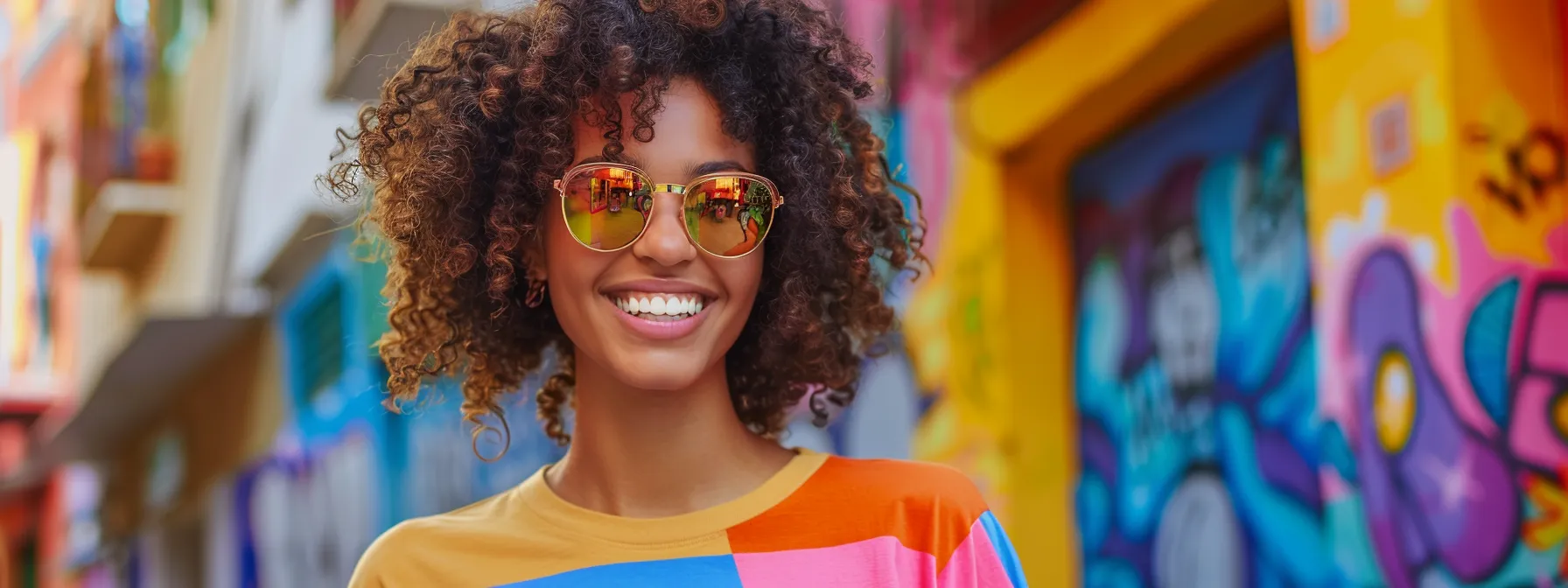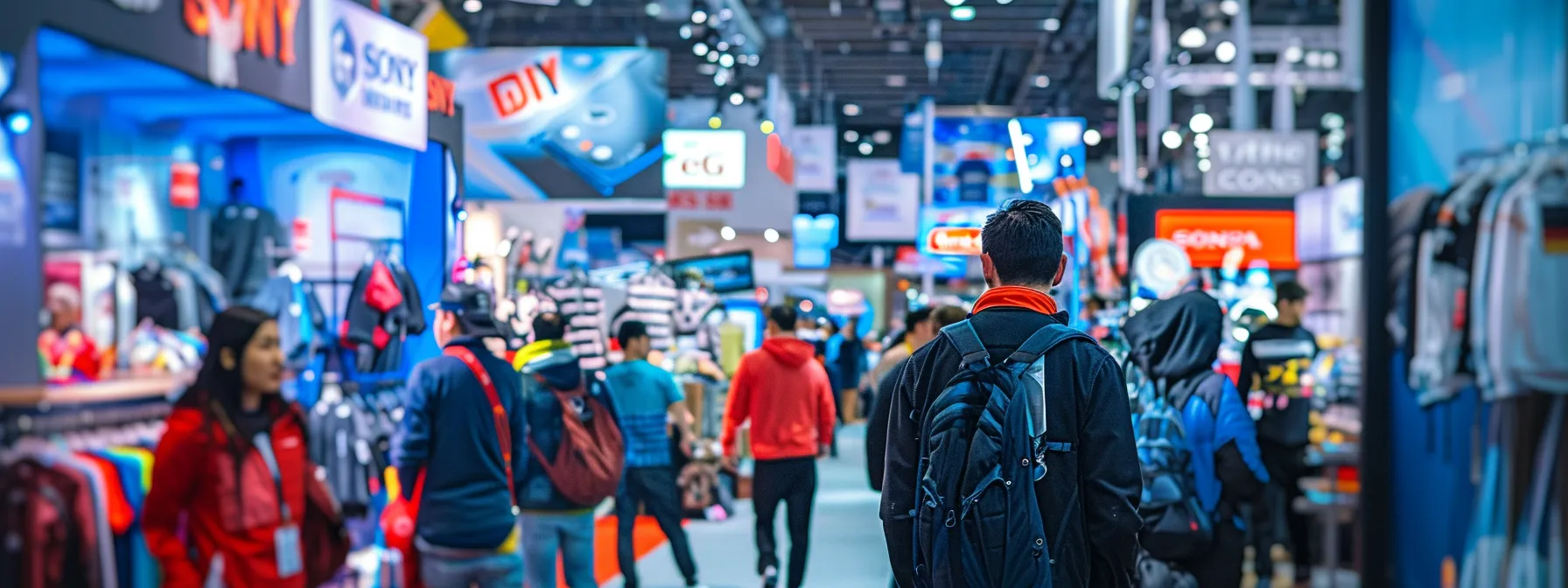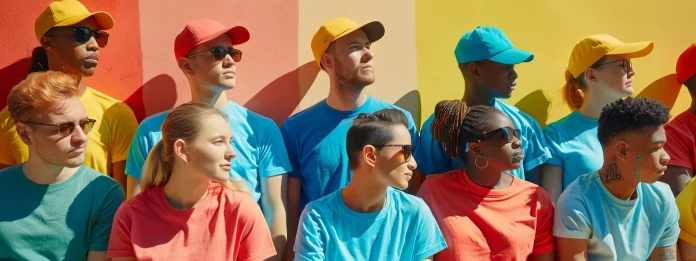Promotional apparel often gets overlooked in marketing campaigns, but it can significantly impact brand success. A recent study found that 79% of people can recall the branding on a promotional item they received in the past two years. This article will explore how to strategically integrate promotional merchandise into your marketing strategy, design apparel that resonates with your audience, and measure the return on investment (ROI) of such initiatives. By addressing common challenges in targeted advertising and content marketing, this post aims to provide actionable insights for business owners looking to enhance their brand through effective promotional apparel and support their rebranding efforts.
Key Takeaways
- Branded merchandise acts as effective marketing tools by enhancing brand visibility and engagement
- High-quality promotional apparel fosters customer loyalty and emotional connections with the brand
- Timing and strategic distribution of promotional items boost customer engagement and brand recognition
- Personalization and sustainability in promotional apparel resonate with modern consumer preferences
- Leveraging technology, such as AR and QR codes, creates interactive branding experiences
Understanding the Influence of Promotional Apparel on Brand Success

Branded merchandise significantly enhances brand visibility, effectively contributing to marketing strategies. Understanding the psychology behind wearing branded apparel reveals how it fosters a sense of belonging, which is crucial in loyalty programs. Additionally, promotional clothing serves as a tangible asset that can drive revenue, reinforcing brand loyalty through consistent use and recognition among consumers.
How Branded Merchandise Enhances Brand Visibility
Branded merchandise plays a pivotal role in increasing brand visibility, particularly during advertising campaigns. When consumers wear promotional apparel, they effectively become walking billboards, showcasing the brand to a wider audience. This organic exposure can seamlessly integrate with other marketing strategies, such as email marketing and mobile app promotions, amplifying the brand’s presence across various platforms.
Moreover, incorporating promotional apparel into sales promotions can enhance customer engagement and boost conversion rates. For example, offering branded merchandise as a reward for completing a purchase in a shopping cart encourages consumers to become brand advocates. This approach not only fosters loyalty but also reinforces the brand’s identity within the marketplace, making it a strategic asset in any marketing campaign.
The Psychology Behind Wearing Branded Apparel
The psychology behind wearing branded apparel is intricately linked to the concepts of loyalty and belonging. Consumers often associate wearing a brand’s merchandise with exclusive perks, such as receiving a coupon for future purchases or updates through a newsletter. This connection not only promotes brand affiliation but also acts as a powerful incentive for individuals to engage more deeply with the brand and its offerings, heightening their sense of loyalty.
Furthermore, promotional apparel can effectively support strategies like product bundling. When brands include merchandise as part of a purchase incentive, customers feel they are receiving added value. This creates a tangible relationship with the brand that goes beyond transactions, encouraging repeat purchases and deepening customer engagement. Brands that successfully leverage this aspect of psychology can unlock significant advantages in their marketing campaigns.
Building Brand Loyalty Through Promotional Clothing
Promotional clothing can significantly elevate brand loyalty by reinforcing the brand’s unique selling proposition. When customers receive high-quality branded apparel, they perceive value that goes beyond mere product features. This tangible touchpoint fosters a deeper emotional connection, enhancing customer satisfaction and encouraging repeat business. Brands that effectively manage these interactions can create a loyal customer base that advocates for their offerings.
Moreover, promotional apparel can serve as a strategic tool in brand management, as it allows companies to maintain consistent visibility and engagement with their audience. By integrating branded clothing into their marketing campaigns, businesses can create memorable experiences that resonate with their customers. Such initiatives not only improve overall brand recall but also encourage consumers to incorporate the brand into their daily lives, which ultimately strengthens brand loyalty and drives long-term profitability:
- Enhances emotional connection with customers
- Increases perceived value through quality merchandise
- Encourages repeat purchases and advocacy
- Strengthens brand recall and visibility
- Improves overall customer satisfaction
Integrating Promotional Apparel Into Your Marketing Strategy

Identifying the right audience is essential for maximizing the impact of branded apparel, as it directly enhances the customer experience. Selecting the appropriate types of apparel for campaigns ensures alignment with the brand’s proposition. Finally, effective timing and distribution strategies, informed by social media analytics and search engine optimization, can amplify reach and engagement, driving tangible results for businesses.
Identifying the Right Audience for Your Branded Apparel
Identifying the right audience for branded apparel is fundamental to enhancing marketing strategies, particularly when leveraging gamification techniques. By understanding demographic data and consumer behavior, businesses can tailor promotional clothing to resonate with target groups, motivating loyal customers to share their experiences. This targeted approach not only drives engagement but also boosts lead generation through organic word of mouth, as satisfied customers become advocates for the brand.
Furthermore, integrating marketing automation tools can streamline the process of audience identification and segmentation. Businesses can analyze consumer responses to previous campaigns, refining their strategies to ensure that promotional apparel aligns with audience preferences. This precise targeting enhances the effectiveness of campaigns, driving higher conversion rates and reinforcing brand loyalty in a competitive marketplace.
Choosing the Appropriate Types of Apparel for Your Campaign
Choosing the appropriate types of apparel for a marketing campaign requires careful consideration of the target audience and the overall branding goals. Advertising agencies often emphasize the importance of alignment between promotional clothing and the brand’s identity. Selecting items that resonate with customers not only enhances marketing communications but also increases customer lifetime value by creating a positive association with the brand.
Practical examples demonstrate that high-quality apparel, such as stylish t-shirts or functional outerwear, can serve as valuable assets in a brand’s marketing arsenal. For instance, a company launching a new product might distribute branded caps at an outdoor event, effectively generating visibility while allowing potential customers to engage directly with the brand. When promotional apparel is tailored to the audience’s preferences, it becomes a significant driver of loyalty and recognition within the marketplace.
Timing and Distribution Strategies for Maximum Impact
To maximize the return on investment from promotional apparel, timing and distribution strategies must align with the overall marketing objectives. For instance, releasing branded merchandise during key sales events can offer significant upselling opportunities, allowing businesses to increase transaction sizes as customers are encouraged to add items to their cart. Integrating promotional apparel with email marketing campaigns can also enhance engagement, prompting customers to provide their email addresses in exchange for exclusive merchandise offers, further expanding the brand’s marketing reach.
Strategic distribution of promotional apparel is equally important for creating a compelling value proposition. Targeting audiences during relevant occasions, such as trade shows or community events, ensures that products are presented when customers are most receptive. By carefully selecting when and where to distribute these items, businesses can reinforce brand messaging and create memorable interactions, ultimately driving customer loyalty and securing long-term relationships that benefit the brand’s growth.
Designing Effective Promotional Apparel That Resonates

Effective promotional apparel should align design elements with brand identity to evoke emotion and enhance brand loyalty. Ensuring high quality reflects brand values, while incorporating clear call-to-actions turns apparel into powerful marketing channels. This section will explore how thoughtful design can resonate with audiences, maximizing the impact of promotional items through strategic alignment with branding goals.
Aligning Design Elements With Brand Identity
Aligning design elements with brand identity is crucial for any promotional apparel strategy. The apparel design should reflect the brand’s values and aesthetics, ensuring that it resonates with the target audience. For instance, a company focusing on affordability may choose designs that emphasize utility and comfort, maintaining a competitive price point while enhancing its reputation for value. This alignment not only strengthens brand recognition but also promotes loyalty, making consumers more likely to advocate for the brand within their social circles.
In the context of a content marketing campaign, effective promotional apparel becomes a strategic asset. By incorporating engaging elements that reflect the brand’s voice, such as slogans or graphics, businesses can make a memorable impact. For example, using promotional items as rewards, like a gift card for social shares, can stimulate participation in guerrilla marketing efforts. This approach not only maximizes visibility but also encourages customer interaction, fundamentally reinforcing the connection between the brand and its audience.
Ensuring Quality to Reflect Brand Values
Ensuring high quality in promotional apparel is vital for reflecting brand values effectively. When businesses prioritize quality, they enhance consumer perception, instilling confidence in potential customers. For instance, a company that invests in durable materials and comfortable designs communicates its commitment to excellence, which can strengthen customer loyalty and align with an overarching marketing strategy.
This focus on quality also fosters a positive company culture, as employees and customers alike are more likely to take pride in wearing and promoting exceptional apparel. By leveraging automation tools, brands can streamline the production process while maintaining high standards. This combination of quality control and effective marketing copywriting can significantly enhance campaign results, driving engagement and fostering long-lasting relationships with consumers:
- Enhances consumer perception through quality
- Strengthens customer loyalty aligned with brand values
- Fosters a positive company culture
- Utilizes automation tools for high standards
- Improves campaign results with effective copywriting
Incorporating Call-to-Actions in Apparel Design
Incorporating call-to-actions (CTAs) into apparel design can significantly enhance brand engagement and drive consumer action. By integrating clear and creative CTAs directly on the clothing, brands can elevate their visibility while creating a tangible connection with the audience. For example, a brand might include a slogan encouraging wearers to follow them on social media or a QR code linking to affiliate marketing opportunities. This innovation not only fosters a sense of urgency but also reinforces the brand’s credibility through direct calls for interaction.
Strategically placed CTAs serve to transform promotional apparel into powerful marketing tools. Brands that implement engaging and motivational phrases can inspire wearers to advocate for the brand both online and offline, amplifying their reach. This concept not only captures attention but also promotes a community around the brand, positioning it effectively in the marketplace. Ultimately, by making call-to-actions a foundational aspect of apparel design, businesses can unlock greater potential for success in their marketing campaigns.
Case Studies of Successful Promotional Apparel Campaigns

Company X’s innovative t-shirt giveaways highlight how branded apparel can significantly boost brand awareness through effective engagement strategies. The impact of limited-edition promotional clothing will be explored, showcasing its effectiveness in capturing attention. Additionally, lessons learned from top brands will provide valuable statistics and insights on optimizing email marketing campaigns and enhancing visibility via channels like a Google Business Profile.
How Company X Boosted Brand Awareness With T-Shirt Giveaways
Company X effectively leveraged t-shirt giveaways as part of its marketing strategy to enhance brand awareness among its target audience. By employing market research to identify key trends and preferences, the brand designed appealing shirts that resonated with consumers, encouraging them to wear the merchandise proudly. This proactive approach not only elevated visibility but also fostered positive behavior toward the brand, establishing a sense of community among wearers.
Additionally, the integration of social media marketing boosted the impact of the t-shirt campaign. Company X encouraged recipients to share images wearing the shirts on various platforms, creating a ripple effect that significantly expanded brand reach. This strategy facilitated organic engagement, transforming customers into brand advocates and effectively reinforcing brand loyalty within the marketplace.
The Impact of Limited-Edition Apparel in Brand Promotion
Limited-edition apparel serves as a powerful tool in brand promotion, creating a sense of urgency and exclusivity that resonates with consumers. By tapping into personalization, brands can offer unique designs that reflect current trends or cultural events, effectively positioning their products as must-have items. This strategy encourages consumers to act quickly, transforming them into brand ambassadors who proudly showcase their limited-edition apparel, thereby amplifying the brand’s visibility and impact within their marketing campaigns.
For example, brands like Company Y successfully implemented limited-edition releases to engage their audience and generate buzz around their business model. By employing targeted marketing campaigns that highlight the rarity and uniqueness of the apparel, they effectively increased consumer interest and engagement. Such strategies not only drive immediate sales but also foster long-term relationships, helping to establish a loyal customer base that values the brand’s commitment to innovation and exclusivity:
- Creation of urgency through limited editions
- Utilization of personalization to connect with consumers
- Encouragement of brand advocacy among consumers
- Integration of exclusive designs into marketing campaigns
- Strengthening of customer relationships through unique offerings
Lessons Learned From Top Brands Using Promotional Clothing
Top brands have demonstrated that effective use of promotional clothing as part of their marketing mix can significantly enhance brand visibility and customer loyalty. Organizations that strategically integrate merchandising into their overall promotional efforts benefit from increased recognition and often achieve a stronger emotional connection with their audience. By utilizing impactful slogans and engaging designs, these brands ensure that their promotional apparel not only serves as a marketing tool but also resonates deeply with consumers, driving engagement and fostering brand advocacy.
Successful campaigns highlight the importance of aligning promotional apparel with organizational values and customer preferences. For example, brands that craft limited-edition items or seasonal themes effectively leverage urgency to motivate purchases. This approach allows organizations to not only showcase their brand identity but also to create a memorable experience that encourages customers to share their connections on social media, amplifying the campaign’s reach. Such insights reveal that promotional clothing, when used thoughtfully, plays a crucial role in elevating brand success through targeted promotion and strategic merchandising.
Measuring the ROI of Promotional Apparel in Marketing Campaigns

Measuring the ROI of promotional apparel in marketing campaigns involves several key areas, including tracking customer engagement and gathering customer feedback. Analyzing sales and conversion metrics post-campaign allows brands to assess the effectiveness of their strategies. Insights gained from these analyses can guide adjustments to future marketing efforts, improving storytelling techniques and enhancing mailing list strategies for greater impact.
Tracking Brand Engagement and Customer Feedback
Tracking brand engagement is essential for measuring the ROI of promotional apparel in advertising campaigns. By collecting data on how consumers interact with branded merchandise, businesses can determine the effectiveness of their strategies. For example, brands can analyze social media mentions or shares to evaluate the impact of influencer marketing, ensuring they maximize every dollar spent on promotional products.
Customer feedback also plays a critical role in refining direct and referral marketing tactics related to promotional apparel. Surveys and feedback forms can provide valuable insights into customer perceptions, enabling businesses to adjust their marketing strategies accordingly. Understanding how customers view their branded merchandise—as a billboard for the brand or as a valued item—can guide future efforts in creating effective advertising campaigns:
- Evaluate social media interactions to measure engagement
- Implement feedback forms to gather customer insights
- Refine marketing strategies based on consumer perceptions
- Strengthen influencer marketing efforts through data analysis
- Assess the impact of promotional apparel on brand visibility
Analyzing Sales and Conversion Metrics Post-Campaign
Analyzing sales and conversion metrics post-campaign is essential for understanding the effectiveness of promotional apparel within the target market. Brands can gauge the success of their efforts by examining sales data, tracking any increases in merchandise purchases, and monitoring how promotional graphics influence consumer behavior. Research indicates that brands employing creative designs that resonate with their audience not only boost visibility but also enhance the likelihood of turning customers into brand ambassadors.
Furthermore, establishing clear conversion goals can help brands measure the direct impact of promotional campaigns on sales. By utilizing analytics tools to capture data before and after the campaigns, businesses can identify trends in customer engagement and buying patterns. This approach allows brands to refine their future strategies by learning what designs, messages, and incentives resonate most, ultimately driving loyalty and increasing sales efficiency:
Adjusting Future Strategies Based on Insights
Adjusting future strategies based on insights gained from promotional apparel campaigns is essential for enhancing marketing effectiveness. By analyzing customer feedback, brands can identify which designs resonate best and whether mobile marketing efforts have successfully drove audiences to engagement points, such as landing pages. This targeted approach allows businesses to fine-tune their strategies, ensuring that promotional items align with consumer preferences while optimizing for customer retention.
Furthermore, incorporating sustainability into future promotional apparel choices can strengthen brand loyalty among eco-conscious consumers. Brands that prioritize eco-friendly materials in their retail offerings resonate well with customers looking to make responsible purchases. By tracking the performance of previous campaigns and leveraging insights, companies can better navigate their marketing initiatives, adapt product designs, and explore untapped markets where sustainable promotional apparel can create a strong competitive advantage:
Future Trends in Promotional Apparel Marketing

Future trends in promotional apparel marketing focus on three critical areas: sustainability, personalization, and technology. Sustainable and eco-friendly apparel options are becoming increasingly important as consumers prioritize responsible choices. Additionally, customization in promotional products allows brands to create unique items that resonate with individual preferences. Leveraging technology in apparel further engages customers, enhancing brand experience and loyalty.
Sustainable and Eco-Friendly Apparel Options
Sustainable and eco-friendly apparel options are emerging as key elements in promotional marketing strategies, reflecting a growing consumer preference for responsible and ethical brands. Organizations that prioritize sustainability can enhance their reputation while appealing to eco-conscious customers. For example, brands can utilize materials derived from organic cotton or recycled plastics, demonstrating a commitment to environmental stewardship that resonates well with their target audience.
Incorporating eco-friendly promotional apparel not only boosts brand visibility but also connects brands with their customers on a deeper level. By adopting sustainable practices, companies can differentiate themselves in a crowded marketplace and foster lasting loyalty. Engaging consumers with stories about their sustainable initiatives can further strengthen this bond, transforming customers into advocates who appreciate and promote the brand’s values.
Personalization and Customization in Promotional Products
Personalization and customization in promotional products have become essential strategies for brands seeking to enhance engagement and foster loyalty. By offering tailored items that reflect individual preferences, companies can create a unique emotional connection with consumers, making them feel valued and appreciated. For instance, businesses that allow customers to choose designs or add their names to apparel are likely to see increased word-of-mouth promotion, as satisfied customers proudly share their customized items with their networks.
This trend not only elevates brand recognition but also encourages repeat purchases. Successful brands often utilize data analytics to track consumer behavior and preferences, allowing them to create targeted promotional apparel that resonates with specific market segments. Such strategic actions can significantly improve customer experiences, driving brand affinity and resulting in long-term loyalty in a competitive marketplace.
Leveraging Technology in Apparel to Engage Customers
Leveraging technology in apparel marketing allows brands to create interactive experiences that engage customers and expand brand loyalty. Innovations such as augmented reality (AR) can transform basic promotional clothing into immersive branding experiences. For instance, brands can utilize AR to allow customers to visualize how an item would look on them through their smartphones, enhancing the purchasing process and making it more dynamic.
Additionally, integrating QR codes on promotional apparel can connect customers directly to exclusive online content or special promotions. When customers scan these codes, they can access personalized offers, enter giveaways, or learn more about the brand’s story. This tactic not only makes the apparel a valuable marketing tool but also fosters a deeper connection between the consumer and the brand, driving engagement in ways that traditional marketing approaches cannot achieve.
Conclusion
Strategically utilizing promotional apparel in marketing campaigns is essential for enhancing brand visibility and fostering customer loyalty. By understanding the psychological influence of branded clothing, businesses can create deeper emotional connections with their audiences. Implementing thoughtful designs, high-quality materials, and effective CTAs transform apparel into impactful marketing tools that resonate with consumers. Ultimately, integrating these elements can significantly drive brand success, positioning companies to thrive in a competitive marketplace.



